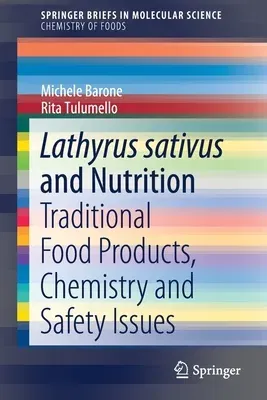Michele Barone
(Author)Lathyrus Sativus and Nutrition: Traditional Food Products, Chemistry and Safety Issues (2020)Paperback - 2020, 8 October 2020

Qty
1
Turbo
Ships in 2 - 3 days
In Stock
Free Delivery
Cash on Delivery
15 Days
Free Returns
Secure Checkout

Part of Series
Springerbriefs in Molecular Science
Part of Series
Chemistry of Foods
Print Length
62 pages
Language
English
Publisher
Springer
Date Published
8 Oct 2020
ISBN-10
3030590909
ISBN-13
9783030590901
Description
Product Details
Authors:
Book Edition:
2020
Book Format:
Paperback
Country of Origin:
NL
Date Published:
8 October 2020
Dimensions:
23.39 x
15.6 x
0.38 cm
ISBN-10:
3030590909
ISBN-13:
9783030590901
Language:
English
Location:
Cham
Pages:
62
Publisher:
Weight:
113.4 gm